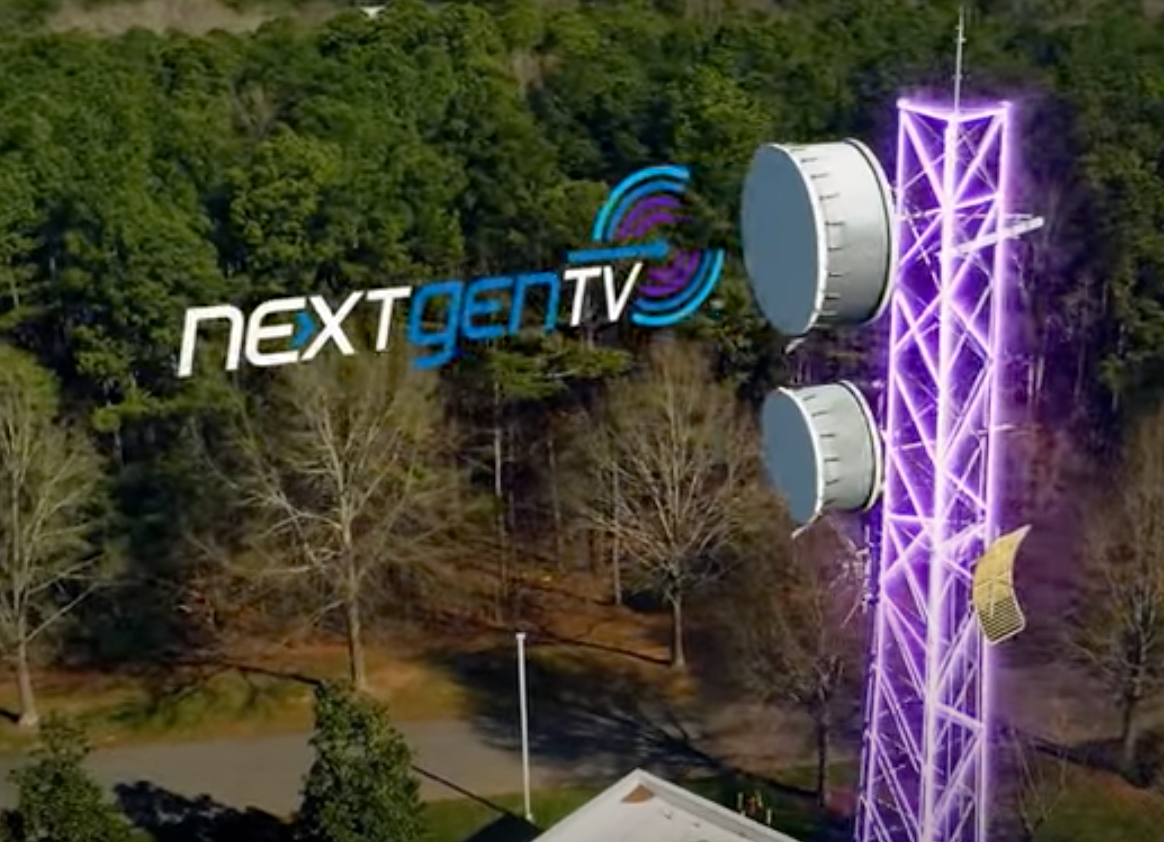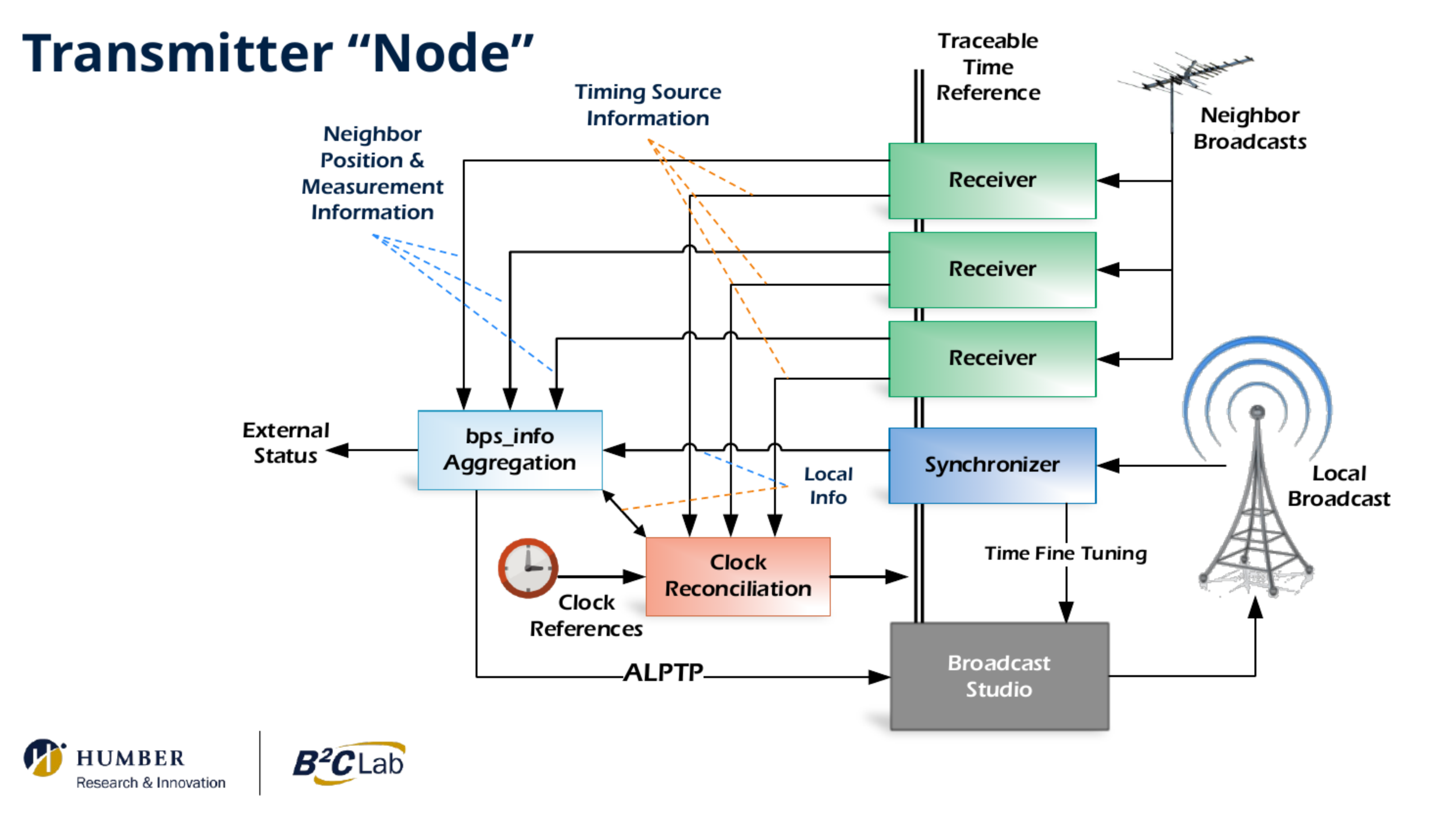
I attended several sessions at the 2024 NAB Broadcast Engineering and IT Conference (BEIT). Many of the presentations were about signals modulating the RF, focusing on ATSC 3.0 and ATSC 3.0 applications rather than the generation and transmission of RF.

We’ve seen ATSC 3.0 can do more than provide video and audio to TV sets. As I’ve said before, the transition to ATSC 3.0 depends on the availability of devices to receive ATSC 3.0. Demand for these ancillary services could provide an incentive for broadcasters to switch to ATSC 3.0 and for devices to include ATSC 3.0 capability.
Precision Navigation and Timing
One service that is receiving attention is precision navigation and timing—PNT—and how broadcast transmission can support it.
Judah Levine, NIST Fellow, Time and Frequency Division, National Institute of Standards and Technology showed how unmodified broadcast TV signals could be used to provide precision time and frequency in “Transmitting Time and Frequency Data by Using Broadcast TV Signals Observed in Common-View.”
In the Common-View system, the transmitter is not modified but the receive time of a known pattern in the signal (i.e. bootstrap in ATSC 3.0) is compared with a local clock at two or more receivers to determine the transmitted time and frequency of the signal. Propagation delay and multipath will introduce some errors but the error can be calculated.
The method is similar to one used in the early days of color TV when the 3.579 MHz color subcarrier frequency of network affiliates was locked to that of the network. This technique stopped working when broadcasters started using digital frame synchronizers and with their own local reference.
There were several presentations on the Broadcast Positioning Service (BPS). The presentations reiterated the need for a backup for GPS and outlined the progress being made in developing and testing BPS in different locations. BPS is one of the systems for GPS backup under consideration. Comments from experts at the sessions indicated BPS was at or near the top of the list.
One presentation, “ATSC 3.0 Broadcast Positioning System (BPS) Mesh Network” by Vladimir Anishchenko, president and CTO at Avateq, and Mark Corl, senior vice president, Emergent Technology Development at Triveni Digital, showed how multiple transmitters could form a mesh network, with “leader” transmitters having traceable time references and “followers” that would compare their clocks with those from neighboring transmitters, including the leader transmitters. The paper in the NAB BEIT Proceedings has detailed drawings and tables showing how this works. Fig. 1 shows a simplified diagram from a Humber College presentation.

Emergency Alerting & 5G
The BEIT presentation “ATSC 3.0 and Wireless Emergency Alerting – A Great Match” by Fred Engel at PBS North Carolina and Chris Lamb at Device Solutions showed how ATSC 3.0 can provide alerts when the cellular system is down, as was the case during the Maui fires. It is easier to protect a high-power, high-tower transmission site than cell sites distributed in the area experiencing the disaster.
The other advantage, which utilizes the paging receivers developed by Device Solutions, is reduced latency. Conventional paging systems using digital radios employed by public safety agencies can have minutes of delay compared to seconds with systems using ATSC 3.0. This video shows how ATSC 3.0 is used to deliver emergency dispatch information over a large area.
While there was interest in 5G Broadcast transmission and there were products on display to transmit 5G Broadcast, I heard more discussions about how ATSC 3.0 and 5G (both 5G Broadcast and New Radio) could complement each other. I did not see any papers devoted to 5G Broadcast, but there were presentations showing how 5G (both 5G Broadcast and 5G New Radio) and ATSC 3.0 could work together.
In her presentation “How IP-based Broadcast Meets 5G for Resilient and Sustainable Media Distribution,” Emily Dubs, head of technology at the DVB Project, explained how the DVB-I standard works with existing broadcast standards, not only DVB-T2 but ATSC 3.0 and others, to give devices multiple options for receiving content via broadcast if available and if not, ways to obtain the content over an IP connection (wired or wireless).
The DVB-I service discovery can show receivers the optimum path for receiving program content. As part of the explanation, Dubs also discussed the challenges broadcasters face getting their content to mobile devices and how broadcasters and mobile network operators can help each other with distribution. More information is available in the presentation and at https://dvb-i.tv/.
Mapping 5G Frames into ATSC 3.0
One of the most interesting technical presentations was from Louis Libin and Mike Simon from ONE Media Technologies showing how 5G frames could be mapped into ATSC 3.0 signals to allow a broadcaster to deliver data in both an ATSC 3.0 format and a 5G compatible format and take advantage of receive device power saving options available in both.
Even though the ATSC 3.0 standard is extremely flexible, there are differences with 3GPP 5G standards that make it difficult to add time-multiplexed 3GPP 5G frames. Libin and Simon explained how an extension to the ATSC 3.0 standard and update to 5G New Radio (perhaps in 3GPP Release 20) could allow a station to transmit a signal with portions available on both ATSC 3.0 receivers and 5G devices.
The presentation, “The Convergence Opportunity for ATSC 3.0 and 5G NR Multicast Broadcast Service” is available in the Proceedings and with a password (available from ONE Media) at https://onemediallc.com/libinsimon/.
I did catch a presentation that focused on transmitting RF, “An Innovative In-Service Antenna Monitoring System to Protect Your Antenna and Transmission Line” by Heidi Stamm, Anton Lindner, Christoph Neumaier and Todd Loney from Spinner. The system uses the DTV signal from the transmitter and directional couplers to analyze reflections in the transmission line and antenna system. The paper shows how the distance to fault (or degradation) is calculated and some examples of how it works, including detecting a problem inside a slot antenna.
The NAB BEIT proceedings are available for purchase ($100) and download at https://nabpilot.org/beitc-proceedings/.
I made a presentation to the Public Media Venture TechConnect 24, held on Friday before the NAB BEIT. Billed as the “Master Class with Doug Lung: Analyzing TV Coverage – ATSC 1.0, ATSC 3.0 and 5G Broadcast,” I covered the different methods for calculating coverage, some of the software available for calculating coverage and how techniques used for calculating ATSC 1.0 coverage can be modified for calculating ATSC 3.0 and 5G Broadcast coverage.
The presentation showed how different propagation models and different transmission systems performed under different circumstances. It also includes an extensive reference section with links for further study. The presentation is available at https://www.transmitter.com/tc2024/
As always, your comments and questions are welcome. Email me at dlung@transmitter.com.







